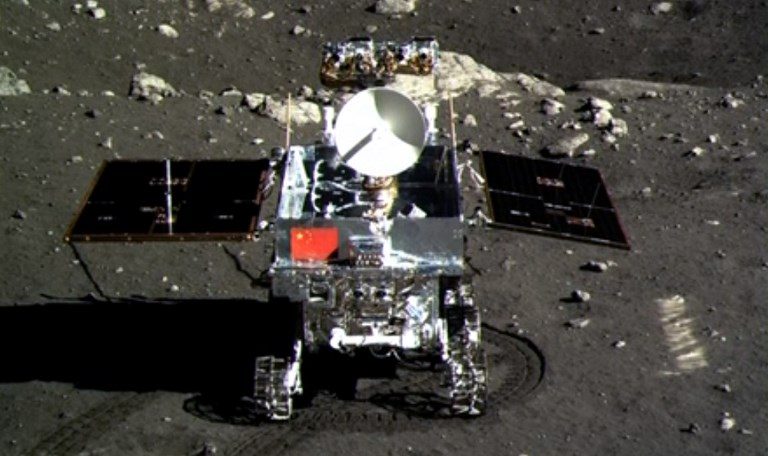SUMMARY
This is AI generated summarization, which may have errors. For context, always refer to the full article.

BEIJING, China – A Chinese lunar rover has driven on the far side of the moon, the national space agency announced on Friday, January 4, hailing the development as a “big step for the Chinese people”.
The Yutu-2 (Jade Rabbit-2) rover drove onto the moon’s surface from the lander at 10:22 pm Thursday, January 3, about 12 hours after the groundbreaking touchdown of the Chang’e-4 probe, the agency said.
The China National Space Administration released a photo taken by the lander showing tracks left by the rover as it departed the spacecraft, though it did not specify how far the rover travelled.
Beijing is pouring billions into its military-run space program, with hopes of having a crewed space station by 2022, and of eventually sending humans to the moon.
Chang’e-4 lunar probe mission – named after the moon goddess in Chinese mythology – was the second Chinese probe to land on the moon following the Yutu rover mission in 2013.
The separation of the rover – which is named after the moon goddess’ pet white rabbit – went smoothly, said Wu Weiren, chief designer of the lunar project.
“Although this was one small step for the rover, I think it is one big step for the Chinese people,” he said in an interview with state broadcaster CCTV, echoing the famous quote by US astronaut Neil Armstrong, the first person to walk on the Moon in 1969.
No lander or rover has ever previously touched the surface of the far side of the moon, and it is no easy technological feat. Challenges include communicating with the robotic lander as there is no direct “line of sight” for signals.
The photo of the rover was sent via the Queqiao (Magpie Bridge) satellite, which was blasted into the moon’s orbit in May to relay data and commands between the lander and Earth.
Chang’e-4 is carrying 6 experiments from China and 4 from abroad, including low-frequency radio astronomical studies – aiming to take advantage of the lack of interference on the moons’ far side.
The rover will also conduct mineral and radiation tests, the China National Space Administration has said.
Beijing is planning to send another lunar lander, Chang’e-5, later this year to collect samples and bring them back to Earth.
It is among a slew of ambitious Chinese targets, which include a reusable launcher by 2021, a super-powerful rocket capable of delivering payloads heavier than those NASA and private rocket firm SpaceX can handle, a moon base, a permanently crewed space station, and a Mars rover. – Rappler.com
Add a comment
How does this make you feel?
There are no comments yet. Add your comment to start the conversation.